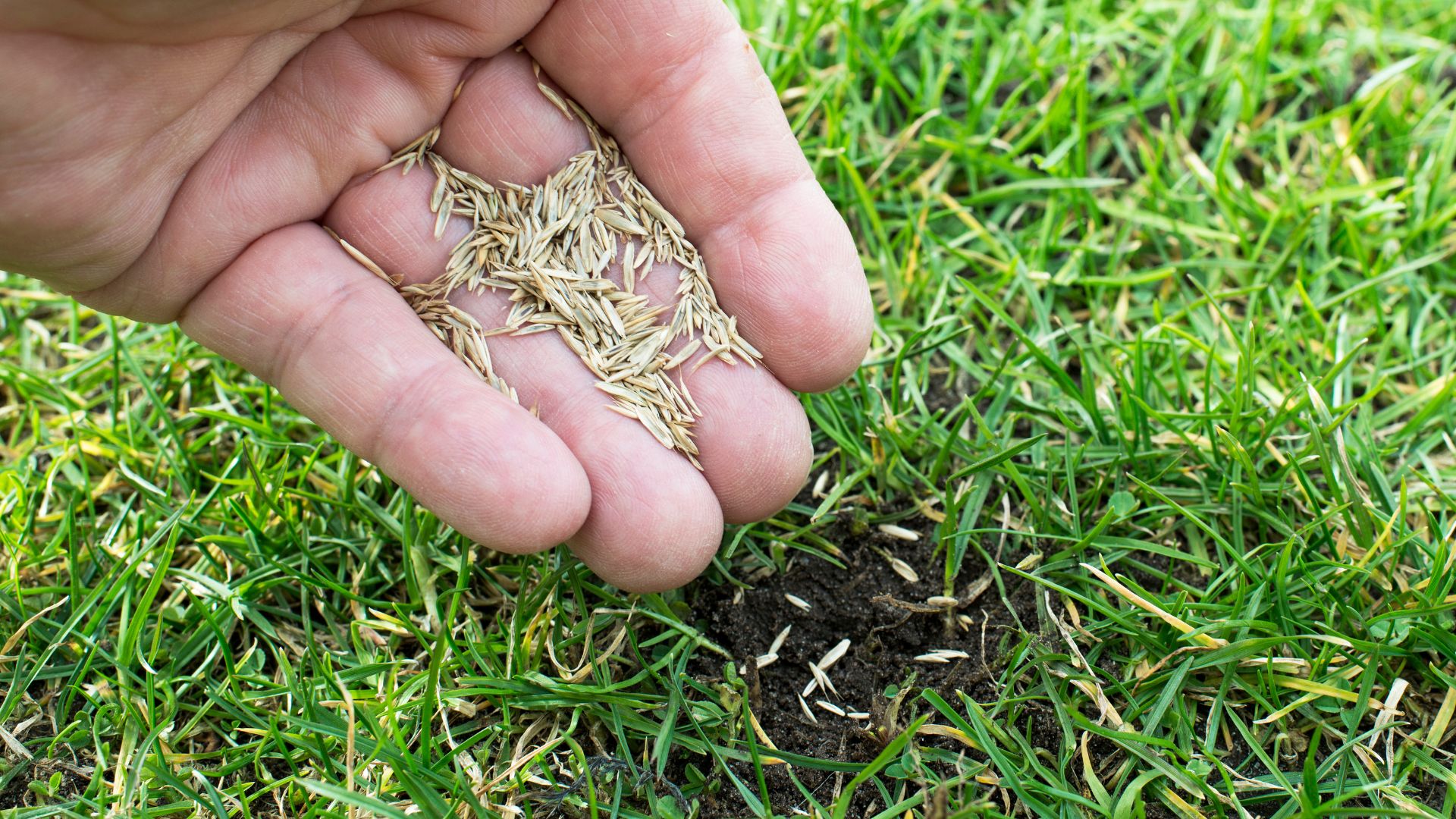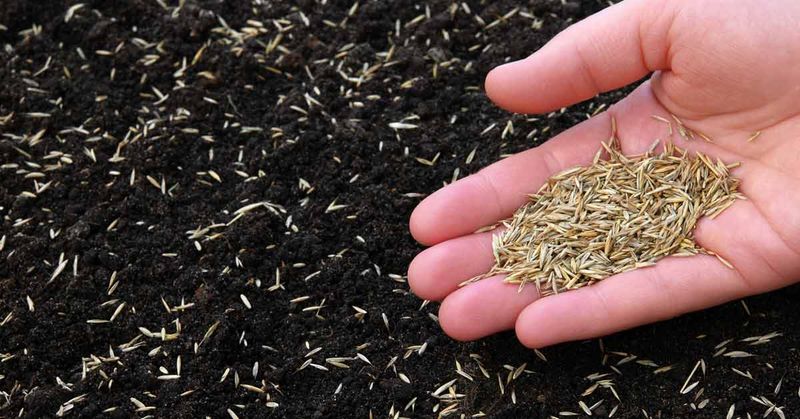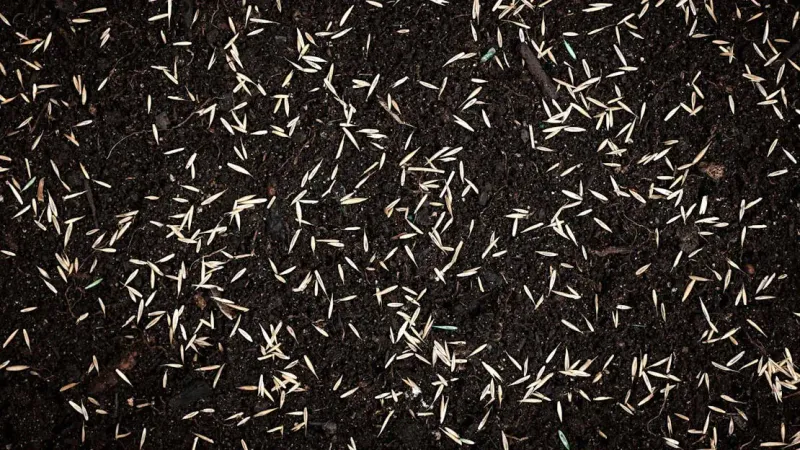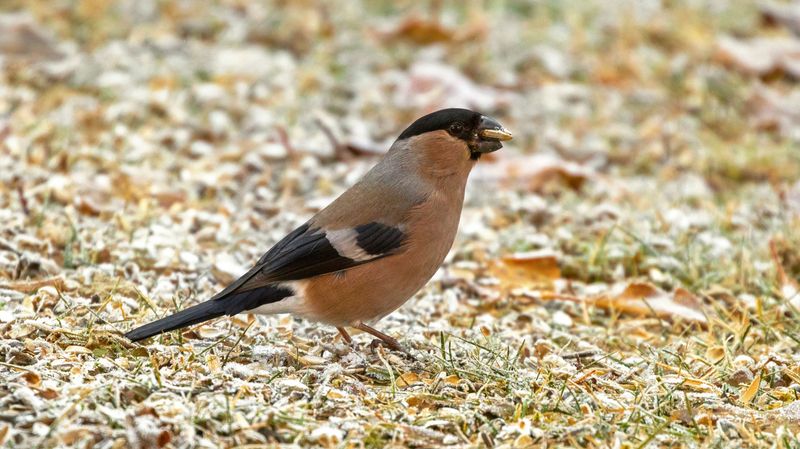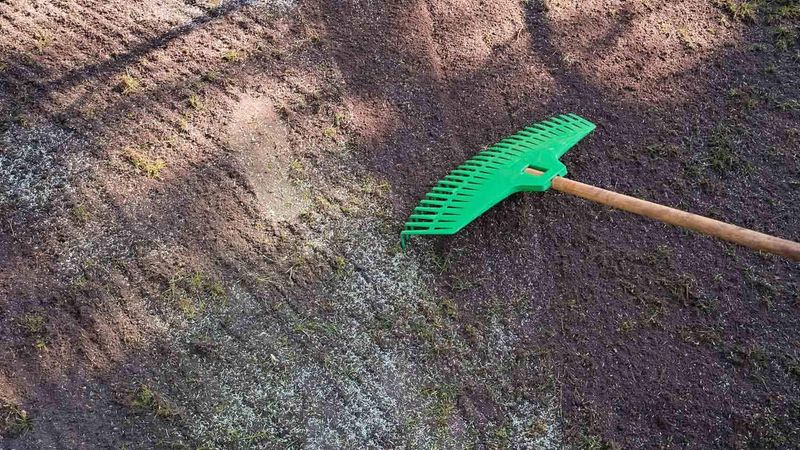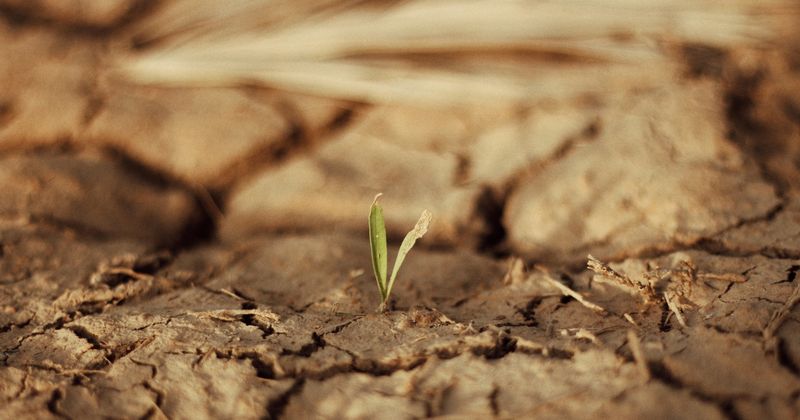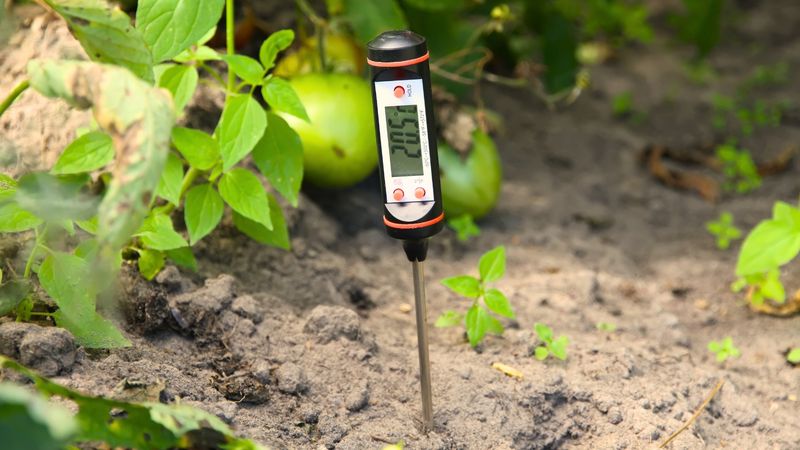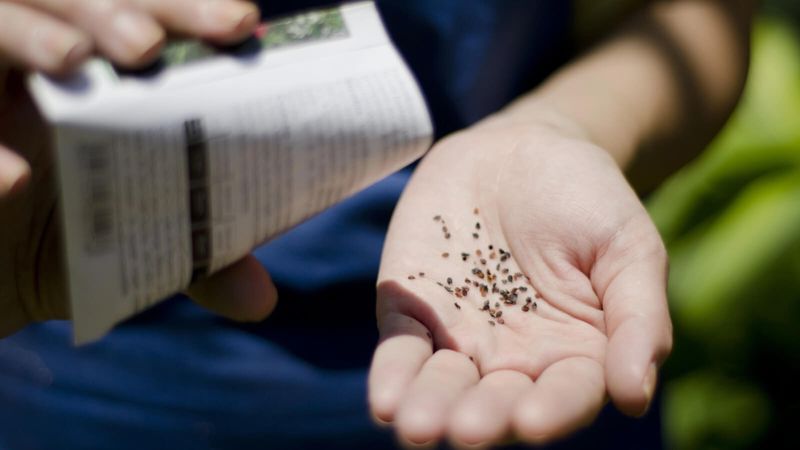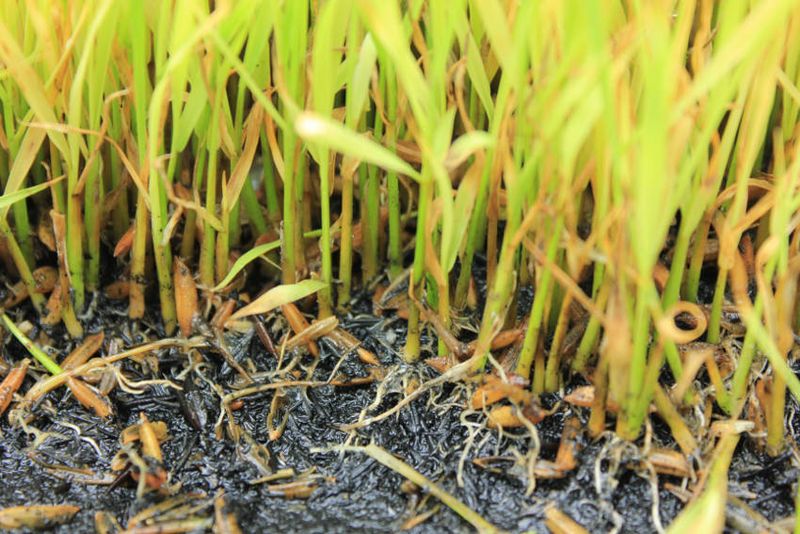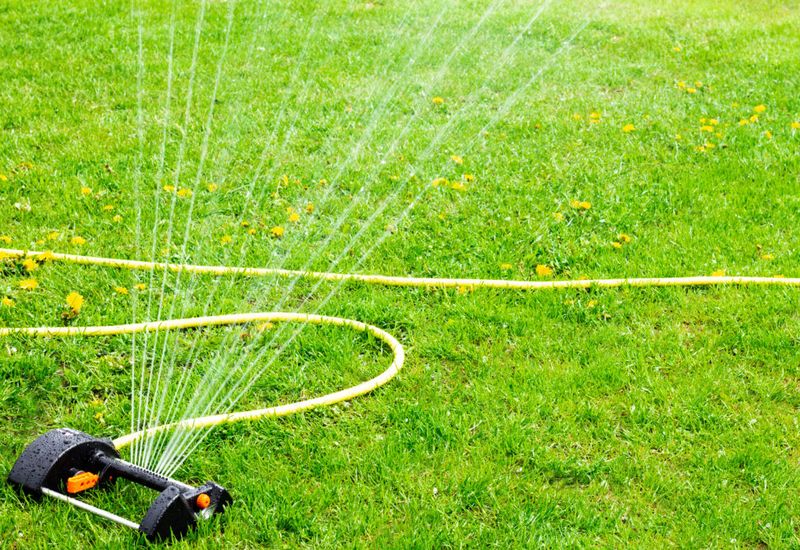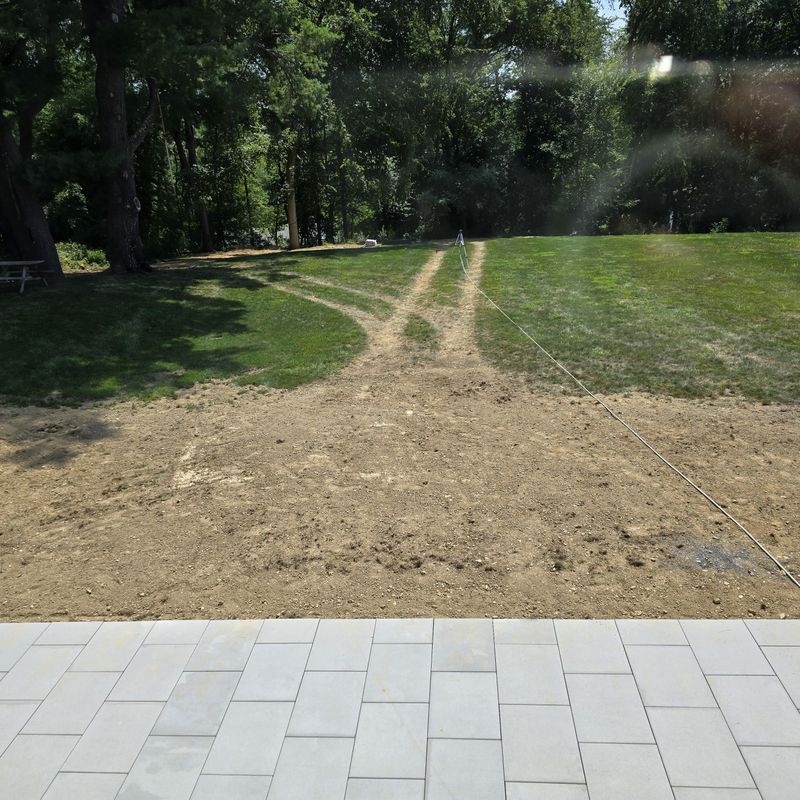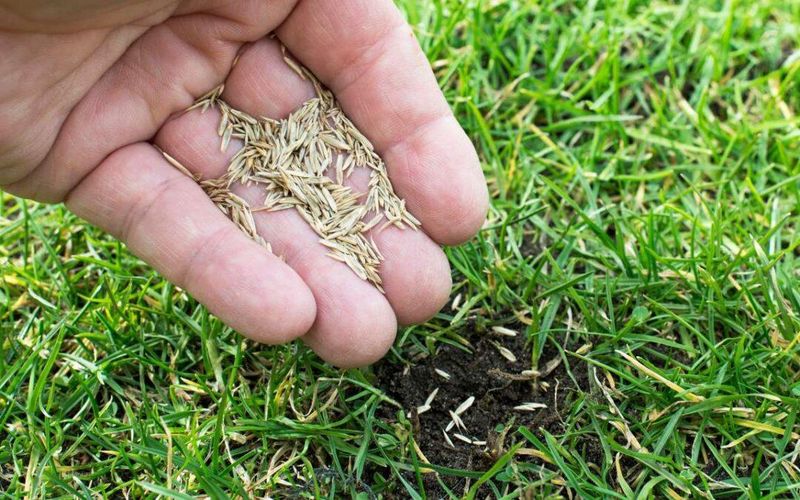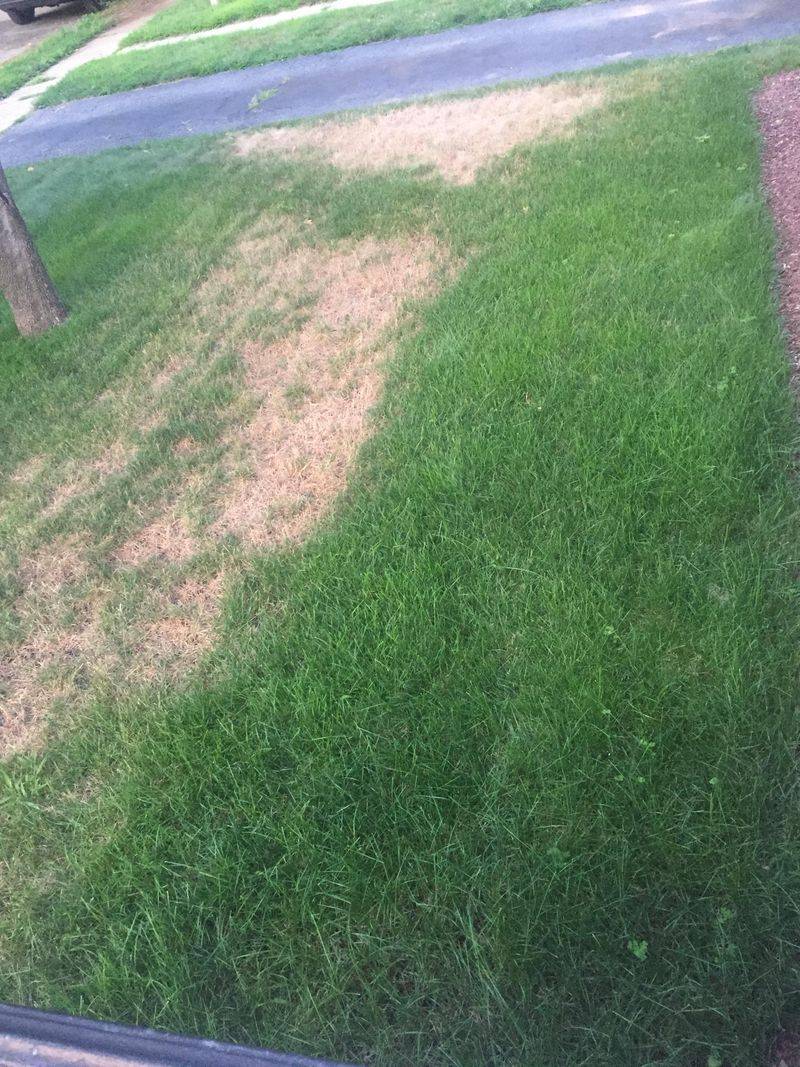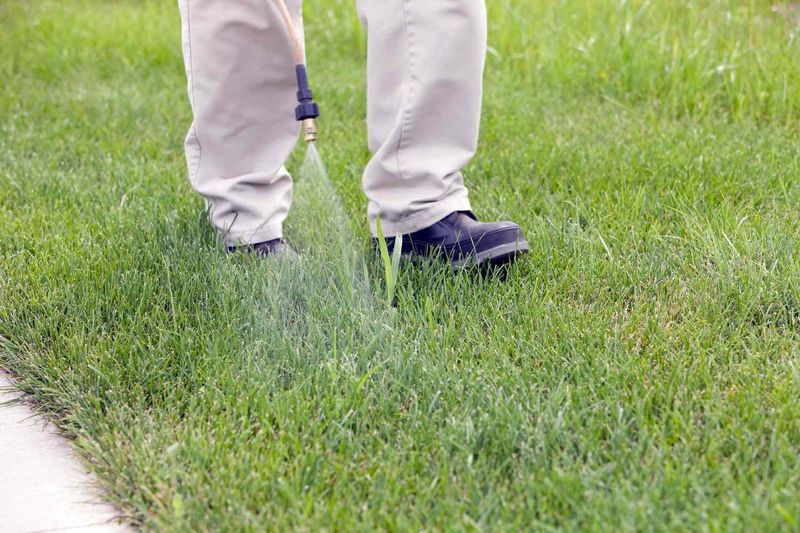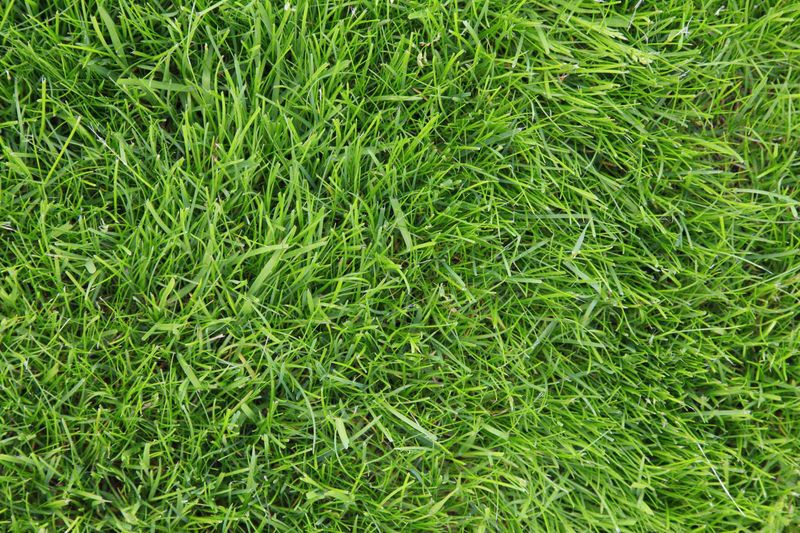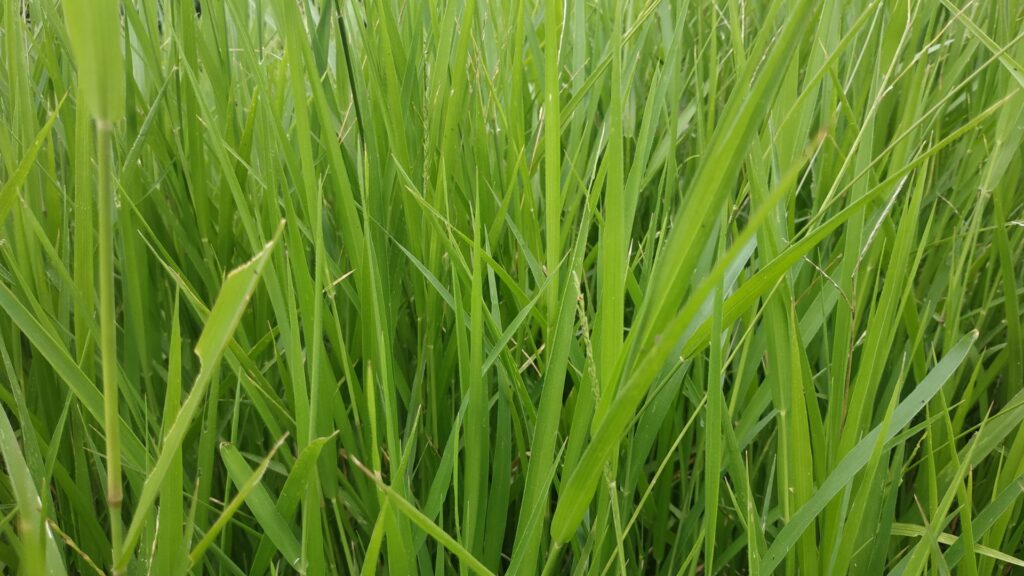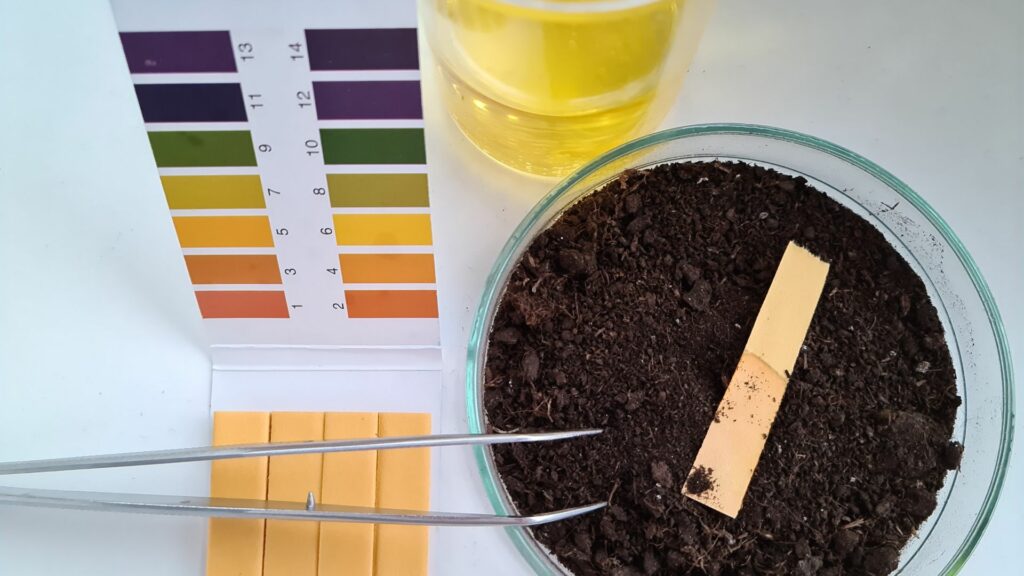Creating a thick, green lawn feels like it should be straightforward—spread some seed, water it, and wait for the magic. But if you’ve ever looked out at bare patches long after seeding, you know it’s not always that simple. One of the biggest reasons grass seed fails to sprout is that it never actually settles into the soil where it can take root.
When seeds just sit on top of the dirt, they’re exposed to everything from hungry birds to drying winds and scorching sun. I’ve been there myself, wondering why nothing came up despite following the bag’s directions.
The good news? Most of these issues are easy to fix once you know what’s really going on. In this guide, we’ll look at the most common reasons your grass seed might not be sprouting and what you can do to give it the best possible start. With a few simple adjustments, that dream lawn is absolutely within reach.
1. Poor Seed-To-Soil Contact
Seeds need direct contact with soil to access moisture and nutrients essential for sprouting. When they sit on top of the surface, they’re essentially floating in a desert with no resources to tap into.
The seed coating must absorb water to soften and allow the embryo inside to swell and crack open. Without touching moist soil, seeds remain dormant indefinitely, regardless of how much you water from above. Using a lawn roller after spreading seed helps press seeds into the soil surface.
Even light raking makes a significant difference by creating tiny depressions where seeds can nestle against the earth and begin their growth journey.
2. Rapid Surface Drying
The topmost layer of soil dries out much faster than deeper zones, especially during warm or windy weather. Seeds sitting exposed on the surface experience extreme moisture fluctuations that prevent the consistent dampness needed for germination.
Even with regular watering, surface seeds might only stay moist for an hour before drying out again. This start-stop hydration pattern confuses the germination process, as seeds need steady moisture for several days straight to properly activate.
A light topdressing of fine compost or soil helps retain moisture around surface seeds. The covering acts like a moisture-trapping blanket, slowing evaporation and giving seeds the consistent dampness they require to break dormancy.
3. Bird Buffet Problems
Birds have excellent eyesight for spotting seeds on bare soil. Your freshly spread grass seed looks like an all-you-can-eat buffet to local birds, who can clear an entire seeded area in just hours. Larger birds like crows and pigeons cause the most damage, but even small songbirds will happily feast on your lawn investment.
Seed consumption is particularly high in early morning and evening hours when bird feeding activity naturally increases. Covering seeds with a thin layer of straw mulch makes them less visible while still allowing sunlight to reach through.
Bird deterrents like reflective tape or plastic predator decoys provide additional protection during the crucial first week after seeding.
4. Missing The Crucial Rake Step
Many homeowners simply broadcast seed across their lawn without taking the essential next step. Raking after seeding isn’t optional—it’s necessary for successful germination by creating pathways for seeds to settle into the soil.
A light raking motion disturbs the top 1/4 inch of soil, creating tiny crevices where seeds can fall and establish contact. Without this step, seeds remain vulnerable on the surface, exposed to wind, water runoff, and predators. Use a leaf rake with flexible tines rather than a stiff garden rake for this job.
The gentler implement moves seeds without burying them too deeply, striking the perfect balance between surface exposure and soil contact.
5. Rainfall Washout Disasters
Heavy rain can turn your careful seeding job into a complete loss by washing seeds away from their intended growing spots. Seeds sitting on the soil surface have nothing anchoring them in place, making them highly vulnerable to even moderate rainfall.
The problem worsens on sloped areas where water naturally channels and flows with greater force. Seeds often end up concentrated in low spots or washed completely off the lawn into drains or landscaping beds. Timing your seeding between forecasted rain events helps prevent washouts.
If unexpected storms threaten, applying a light layer of erosion control mulch can help hold seeds in place until they have a chance to take root.
6. Compacted Surface Barriers
Hard, compacted soil creates an impenetrable barrier that prevents seeds from making proper contact with moist soil below. Seeds perched on dense, crusty surfaces can’t push their initial roots through to anchor themselves. Foot traffic, machinery, and natural settling all contribute to surface compaction.
Clay soils are especially prone to forming hard crusts after drying out, creating a cement-like barrier between seeds and the soil moisture below. Aerating or lightly scarifying the soil surface before seeding breaks up compaction.
Even just scratching the surface with a garden rake creates enough texture for seeds to find purchase and begin rooting into more hospitable layers beneath.
7. Temperature Timing Mistakes
Grass seeds have specific temperature requirements to trigger germination. Cool-season grasses need soil temperatures between 50-65°F, while warm-season varieties require warmer 65-80°F soil to activate. Surface temperatures fluctuate much more dramatically than temperatures just below the soil.
Seeds sitting exposed might experience 90°F during midday and drop to 40°F overnight, confusing their germination triggers and delaying or preventing sprouting. Soil temperature matters more than air temperature when seeding.
Using a soil thermometer to check the actual growing environment helps determine the right timing for your specific grass type, increasing germination success rates significantly.
8. Questionable Seed Quality
Old or improperly stored grass seed loses viability rapidly. Seeds sitting in hot garages or damp basements can drop from 90% germination rates to under 40% in just one year. Bargain bin seed often contains high percentages of inert matter or annual varieties that won’t return after the first season.
The germination rate printed on quality seed packages tells you what percentage to expect to sprout under ideal conditions. Fresh seed from reputable suppliers makes an enormous difference in success rates.
Check the packaging date and test a small sample indoors if you’re uncertain about older seed—place some between damp paper towels for a few days to see how many actually sprout.
9. Fungal Attackers
Seeds contain valuable nutrients that soil fungi find irresistible. Surface-dwelling seeds are particularly vulnerable to fungal attacks because they remain moist enough to attract pathogens but not moist enough to germinate quickly.
Damping-off disease strikes germinating seeds just as they begin to sprout, causing them to rot before establishing. The problem worsens in humid conditions or when watering occurs in evening hours, giving fungi all night to attack without the drying effects of sunlight.
Fungicide-treated seeds offer protection against these common pathogens. Morning watering allows surface moisture to dry before nightfall, reducing the damp conditions fungi need to multiply and attack vulnerable seeds.
10. Overzealous Watering Techniques
Blasting seeds with high-pressure sprayers or sprinklers with too much force moves them from their carefully distributed positions. The water pressure physically pushes seeds across the soil surface, creating bare patches in some areas and overcrowded clumps in others.
Overwatering can also cause seeds to float and migrate, especially on sloped surfaces. Even gentle soil bubbling from water saturation lifts seeds and repositions them as the water recedes. Misting nozzles or sprinklers set to their gentlest setting help maintain seed positioning.
Several light waterings daily work better than one heavy soaking, keeping the surface moist without creating enough water movement to displace the seeds.
11. Excessive Sunlight Exposure
Direct sunlight beats down on exposed seeds, causing them to heat up well beyond ambient air temperatures. Surface temperatures on dark soil can reach 120°F or higher during summer days, essentially cooking seeds before they have a chance to sprout.
Light is necessary for photosynthesis once seedlings emerge, but during the germination phase, most grass varieties actually prefer slight shade. Exposed seeds experience extreme temperature fluctuations that stress the embryo inside and reduce viability.
Applying a thin layer of mulch creates dappled light conditions ideal for germination. Straw, compost, or specialized seed coverings filter intense sunlight while still allowing enough warmth and light to reach the developing seedlings once they emerge.
12. Seasonal Timing Errors
Seeding during the wrong season dramatically reduces success rates. Cool-season grasses struggle when planted in summer heat, while warm-season varieties fail when seeded just before winter dormancy periods. Spring seeding often faces competition from aggressive summer weeds that outpace grass seedling development.
Late fall seedings might not establish enough root growth before winter freezes, leaving young plants vulnerable to cold damage. Early fall offers ideal conditions for cool-season grasses with warm soil and reduced weed pressure.
Late spring works best for warm-season varieties when soil has warmed but summer heat hasn’t reached its peak intensity. Aligning your seeding time with your grass type’s natural growth cycle increases success rates substantially.
13. Premature Fertilizer Application
Applying high-nitrogen fertilizer at the same time as seeding can damage delicate emerging roots. The concentrated nutrients create a salt-like effect that draws moisture away from seeds through osmosis, essentially dehydrating them before they can establish.
Young seedlings have minimal root systems incapable of processing strong fertilizers. What helps established grass can actually burn and kill vulnerable sprouts that haven’t developed protective tissue layers. Starter fertilizers with lower nitrogen ratios are specially formulated for new seeds.
Waiting until grass reaches 1-2 inches in height before applying regular fertilizer allows root systems to develop enough to properly utilize the nutrients without suffering chemical burn.
14. Residual Herbicide Effects
Weed killers leave invisible residues in soil that prevent seed germination. Many pre-emergent herbicides specifically work by creating a barrier that stops seeds from developing, and they don’t distinguish between weed seeds and your grass seeds.
Post-emergent herbicides can leave residual effects lasting weeks or even months depending on the active ingredients. The chemical traces remain in the soil, interfering with the cellular development processes essential for new grass establishment.
Check product labels for recommended waiting periods between herbicide application and seeding. Some require as little as two weeks, while others need several months to break down sufficiently. Seeding too soon after weed treatment is a common reason for complete germination failure.
15. Mismatched Grass Varieties
Different grass species have evolved specific germination requirements based on their native growing environments. Cool-season grasses like Kentucky bluegrass and fescues need different conditions than warm-season Bermuda or zoysia grasses.
Using varieties not suited to your local climate sets seeds up for failure before they even hit the soil. Some types require specific soil pH levels or sunlight conditions that your lawn might not provide, regardless of your care routine.
Local extension offices can recommend regionally appropriate grass types that match your specific growing conditions. Native or adapted varieties naturally germinate better in your area’s unique combination of soil type, rainfall patterns, and temperature ranges.
16. Thatch Layer Interference
A thick thatch layer acts like a spongey barrier that prevents seeds from reaching the soil. Thatch is the buildup of undecomposed organic material—mostly stems and roots—that sits between the grass blades and soil surface. Seeds that land on top of this layer have no access to the soil below and may never germinate.
Thatch also dries out faster than soil and can harbor pests or fungi that interfere with seed development. If you notice a spongy feel underfoot or see that seeds aren’t sinking into the ground, dethatching before seeding can significantly boost success rates.
Removing this layer with a dethatching rake or machine allows seeds to settle directly into the soil and receive the moisture and nutrients they need to germinate properly.
17. Soil PH Imbalance
Grass seed germination depends on the right pH range—generally between 6.0 and 7.0. If the soil is too acidic or too alkaline, essential nutrients become locked up and unavailable to the seed. Even if seeds manage to sprout, poor pH can stunt root growth and lead to early die-off.
Soil tests are the only reliable way to know your pH. These can be done with affordable at-home kits or through local extension services. If pH is off, lime can be added to raise it, while sulfur products help lower it.
Balancing soil pH before seeding ensures nutrients are readily accessible and creates a welcoming environment for healthy germination and early growth.

